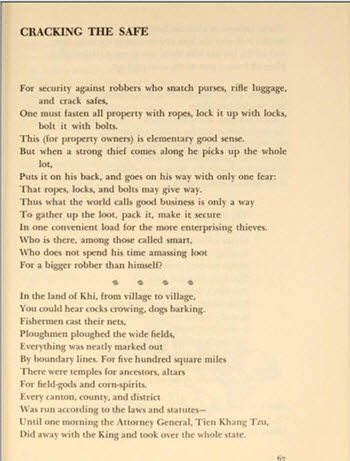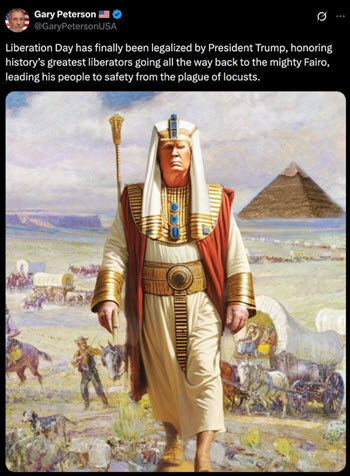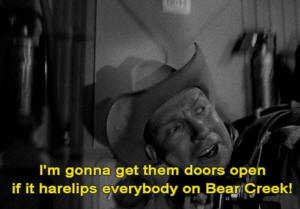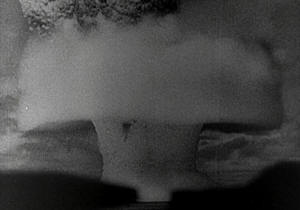by Charles Carreon
6/14/20
NOTICE: THIS WORK MAY BE PROTECTED BY COPYRIGHT
YOU ARE REQUIRED TO READ THE COPYRIGHT NOTICE AT THIS LINK BEFORE YOU READ THE FOLLOWING WORK, THAT IS AVAILABLE SOLELY FOR PRIVATE STUDY, SCHOLARSHIP OR RESEARCH PURSUANT TO 17 U.S.C. SECTION 107 AND 108. IN THE EVENT THAT THE LIBRARY DETERMINES THAT UNLAWFUL COPYING OF THIS WORK HAS OCCURRED, THE LIBRARY HAS THE RIGHT TO BLOCK THE I.P. ADDRESS AT WHICH THE UNLAWFUL COPYING APPEARED TO HAVE OCCURRED. THANK YOU FOR RESPECTING THE RIGHTS OF COPYRIGHT OWNERS.
Origins and Expectations of the Religious Life
I was raised in a family of Mexican-American, Franciscan Catholic, New Deal Democrats. So priests, according to my Dad, were not supposed to be money-grubbers. Priests who behaved humbly and demonstrated material simplicity were the objects of my mother’s warm praise. A kind priest was a light in the community, urging us all to show kindness in daily life.
The idea of anyone going into religion expecting a paycheck was antithetical to the nature of the job. The Jesuits who taught at my high school were motivated by their sense of mission, not by their pay, which must’ve been negligible, if their lifestyle was any reflection of it. They certainly weren’t spending on clothes – four or five black slacks and shirts, a few pairs of black socks, a pair of Oxfords and a Roman collar were all they needed to suit up for the day. The best of these men were icons of self-discipline, focused achievers seeking inner compensation, something personal to each one. If you knew what it was, you’d know the mystery of their individual “vocation,” I suppose.
For example, my junior year English Literature teacher Mr. Fitzpatrick started out teaching spoiled suburban Catholic boys. He was a handsome man, passionate about human rights and equality in a time when Jesuit clerics were predominantly conservative. He was serious about bridging the gap between himself and his students. So during spring break 1970, he took a half-dozen of my friends down to Havasu Canyon, an arduous hike in and out, to reach the beautiful turquoise green falls that cascade hundreds of feet from sculpted red rocks into pools that look like translucent, green agates.
Well of course in that environment, with those kids, in those days, you were going to have some drug episodes. The late Bart Ferrante, then a sexually precocious Hawaiian hunk with martial arts chops, ran amok in the middle of the night, delusional from Jimson Weed intoxication, knocking over tents, hiding out in the shallow lake water, being chased by rangers with huge flashlights, and as he told me a few days later, “uprooting trees with my bare hands.”
The next day, Fitz and the boys had to hike out ASAP, but of course Brian, the ethereal Moody Blues fan, had to drop a full hit of windowpane before starting the hike out of the Grand Canyon, and found himself not really up to the physical exertion required. He needed a lot of help to get out. I think Bart, still flying on belladonna and scopolamine, carried his backpack part of the way, since he had stimulated their sudden decampment. Mr. Fitz was just about destroyed with anxiety, and forever after sort of viewed our little crew of psychonauts as feral creatures best kept at a reasonable distance. Quite wisely, he thereafter devoted his life to ministering to Native Americans on the reservation in Pendleton, Oregon, where he’s been for over forty years.
Dharma Re-Education
I daresay a lot of boomer-age Buddhists had similar religious exemplars. Folks raised in Catholic or Jewish families made up the bulk of our sangha for many years, and I know we all shared the normative view of religion as something that you give away. Our Buddhist cohort also had an egalitarian ethic that was established in hippie society. So we liked teachers who sat on the floor, who didn’t ask for money or make it clear that they wanted it, like a waiter, waiting for a tip. But we had re-educators in our sangha, people who told us that “the right way” to deal with Tibetan Lamas was to give them a high throne, offer them little red envelopes stuffed with cash piled up right in front of them as they sit on the throne, give them special food, special beds, and new linens. Ultimately they break it to you that what you need to give the Lamas is all the stuff you’ve never been able to afford for yourself and your family.
The Ram Dass Initiation
To be fair, we were prepared by the Ram Dass initiation. Ram Dass, using the old Theosophical playbook, took us directly from the self-obliterating power of high-dose LSD tripping to the feet of the guru and the art of devotion. Yogananda had offered an “airplane of spiritual realization,” but Ram Dass appeared to have boarded a rocket ship that had put him permanently in orbit. Who wouldn’t want a piece of that? With the Ram Dass initiation we received a whole new catechism that had an interesting, meritocratic flavor. Yoga had a strong flavor of self-reliance.
We are all One. God is us. We don’t know it. Gurus do. If you get a guru, they’ll teach you mantras, meditation, or maybe they’ll just touch you, and your kundalini will rise, open your chakras, and turn you into the equal of the Guru – a self-realized human being. For this, obviously, you have to pay. Even Jesus called the goal of his quest “a pearl of great price,” and said it would be worth selling everything you had to acquire it. The guru’s got the moksha. Do you got the moolah?
Introduction to the Merit Economy
Once Ram Dass had fitted us for the yoke, the Tibetans were ready to do some plowing. The Tibetans elevated material accumulation to a spiritual plane, however. The Tibetans thus revived a practice that the medieval Catholic Church had practiced for hundreds of years until Martin Luther made it the focus of his attacks on Church corruption -– the sale of divine blessings by priests and bishops, who routinely turned cash into heavenly merit, like a banker changing dollars for pounds. By concretizing merit in the form of offerings, Tibetans are able to justify the most excessive wealth accumulations as acts of worship, generosity, and dispassion.
By making physical offerings and labor donations the evidence of devotion, Tibetan lamas encouraged the belief that anything can be fixed with money. This belief is very popular with traditional Chinese Buddhists, who see giving money to Buddhist causes as the right way to cultivate “the two accumulations of merit and wisdom.” As a result, a strong affinity developed between Tibetan lamas and American Chinese Buddhist communities, once they found each other, usually because hippies were flying them around the country. Eventually, bidding for teachers began, and the sangha that I had been part of for over twenty years was ultimately outbid by another sangha. One thing led to another, and eventually, the temple that Rinpoche had built in Southern Oregon was fated to become an empty shell of what all had hoped it would become, when he abruptly transferred his attentions to the Bay Area, where a Chinese Dharma group had actually managed to put the money down to buy a proper building for an urban temple that could fill up with Chinese people who actually understood how Dharma is supposed to work. You pay, you get.
Money is the New Devotion
The trend to cater to moneyed Dharma students was strong from the beginning, but when real rich people started to bring their friends to the temple, it spelled the end for a lot of old relationships. Those who had money were whisked upstairs to lounge in silken luxury, drink from dragon teacups, and enjoy the god realm atmosphere. Family folks struggling to make ends meet, wanting blessings for their kids, asking questions about their pathetic little practices – those folks became a nuisance, and soon Rinpoche’s minders were routinely giving them the brush-off. Mass meetings for plebes. Face-time for those with checkbooks.
We Came by Our Poverty Honorably
Well you know, people can’t help it if they’re poor, and the first generation of American Buddhists got poor trying to be Buddhists. Like Suzuki Roshi said, our style was to try and blend lay and monastic roles. We liked to lay in bed with our spouses, grow organic gardens, home-school our kids, and meditate like monks, which of course leaves little time for playing the stock market. As a result, even people who got professional degrees and jobs did so after a lot of time spent travelling to India, or living in the woods, reading Thoreau, writing for underground papers and presses, teaching community college, or working for social justice for a few years in legal or medical clinics. We got a real late start on capital accumulation, but we thought that was the Buddhist way, at least until the Tibetans came along, recommending that we wear suits, start businesses, work hard, and fund some Dharma projects.
First In, First Out
Realities collided at the Southern Oregon temple, when a group of rich students decided to hijack Rinpoche’s birthday, invite phony tulkus Steven Seagal and Catherine Burroughs to appear as guests of honor, and in lieu of letting the sangha cooks make free food as we always did, hire a catering outfit to charge us for lunch at our own temple. Then it turned out so many dignitaries had gotten reserved seating that the old students who were left out of the planning were evicted from the temple altogether. Sitting out on the verandah with my wife and two other old students, the sense that we had become nobodies was overpowering. I had a bottle of wine that I was going to offer for tsok, but instead I twisted off the cap and passed it to my friend Michael, who was so shook up he practically drained it in a couple of gargantuan chug-a-lugs. I can still see the bubbles rising in the inverted bottle of pink liquid as he guzzled it. He was bound for oblivion. It hurt that bad.
The ethic had shifted, and the message was clear – “Hippies with handmade offerings are no longer needed or wanted.” The outrage was palpable. We helped pay for the land the temple was built on. We gave years of time and devotion, cooking and feeding retreatants, doing free labor on the land, and it was all rendered irrelevant by a few big checks and a B-moviestar’s appearance at the temple, wrapped in about five yards of yellow silk, still looking like he was ready to smash somebody’s face into a parking lot pillar and toss him out into the street to be run over by a bus.
Sincere poverty was out, useless, undesirable, outré. Indeed, poor disciples were becoming an overt embarrassment, to be hidden from sight. Wealth displays of Tibetan rupas, thangkas and jewelry were the order of the day. After all, you buy them from Tibetans, which is an inherently virtuous act. Hollywood had discovered the Little Buddha fashion god realm, and they were all over it like Rodeo Drive. No one could afford to be seen without a bodhi-seed mala hung with heavy silver counters, and women really needed to get some chubas, because nothing makes a lama happier than seeing that little fold in the back, so neat and discreet, that guards feminine dignity. Until of course, it’s time for secret offerings.
Subservience -- the Most Needful Offering
Many Dharma pioneers are pushed aside by the second wave of students, who feel superior to those who haven’t taken the necessary steps to push the teacher into prominence and power and their sangha into the fast lane. The most important thing, after getting a crew of wealthy donors to sponsor the regular expenses, is to get a phalanx of willing, attractive slaves into harness to pull the vajra vehicle, loaded with gurus and dignitaries, as the sweat pours off their bodies. When lamas and their honored guests need attention, poor Dharma students can provide the kind of subservience that really makes a god realm godly.
And it’s not just Tibetan Buddhists doing this. Enslaving poor zennists was the real crime that should have gotten Baker Roshi canned by Zen Center San Francisco. Of course, the book about his misdeeds is entitled “Shoes Outside the Door,” and refers to the former abbot’s predilection for boffing the wives of his students, but Baker’s use of unpaid Buddhists to run the Zen Bakery and several restaurants, and his deployment of more unpaid Buddhists to serve at his table, was injurious to the spiritual and material well being of many, many people who came wanting to practice Zen, and ended up bussing tables for no pay.
It's All for Sale
At our temple in Southern Oregon, the venality was more crass, and less effective, than Baker’s forced labor scheme. Going to the temple became like going to the Seven-11 in a bad part of town – you were constantly hit up for money. The acquisition and operation of a big sangha property, like a temple/retreat center, generates financial stress, and dues-paying members are the first to feel the pressure. Ideas for fund-raising proliferate. Sometimes, really bad ideas. Like the day the glad-handing Hawaiian real estate salesman, who’d morphed from New Age healer to Vajrayana dealer, sat in the temple and tried to show us how to raise money. Like a deejay trying to get through a community radio telethon, or an auctioneer driving up the price on some piece of fungible crap, he harangued people to pay for the temple’s new roof, or windows, or doors, or … you name it. He took the temple apart a piece at a time, and tried to sell it back to us in a new, improved form. I don’t know how I escaped, but it was not without bitter resentment for the desecration of what I’d thought was a sacred space.
After this and other extortionistic events, my wife Tara tried to communicate how wrong this was to the temple managers, using the favored communication medium of the day – a fax machine. Tara explained very cogently that by making offerings compulsory, they were destroying people’s opportunity to demonstrate generosity. Willing gifts, she was saying, were the only spiritually valuable offerings. But the comprehension up at the temple had shifted. They didn’t care if it was willing. They just wanted the green. A couple of complaints about pushy fundraising later, and Tara was banned from sending “negative faxes.”
Trapped on the Ladder to Enlightenment
Shambhala has gone much farther than this type of simple venalization of Dharma symbols, however. It has recast the entire Buddhist lifestyle in the profit-making mold by promoting the belief that human beings grow best when guided by a curriculum of spiritual development provided by experts, requiring a lifetime investment of time, money and dedication. This presentation bears more similarities to the Scientology model than most Shambhalians are comfortable admitting. Both place aspirants on an extended ladder of development. Each stage of training has financial and educational prerequisities, and yet, this education will not get you any credits in another educational institution, nor will it qualify you to do anything except teach in Shambhala. And if you have a falling out with Shambhala, you cannot call yourself a Shambhala teacher. So Shambhala teachers, who think they are training into a livelihood as a meditation teacher, find themselves trapped in what former Shambhala meditation instructor Shante Smalls described as a “Ponzi scheme” in her goodbye letter to Shambhala. Like Scientologists, Shambhalians acquire a narrow skill set that qualifies them only to be better cult members.
So what we have in Shambhala is a group of people who would like to be teachers, but are now stuck in a shrinking pool of prospective students. Soon, there will be so many teachers and so few students that they will have to take turns pretending to learn from each other. When they try and push off into the big wide world of independent meditation teaching, they discover there is no such market, and yoga studios are oversupplied with lissome beauties of both sexes able to instruct in asanas for very modest compensation. They must turn to the occupation of last resort – life coach.
What are aspiring Shambhala “teachers” looking for? How do they find themselves enmeshed in the aspirations and jargon of an enlightened society? Well, everyone in the United States needs a livelihood, and when you get into Buddhism, you start getting interested in Right Livelihood. If you were indoctrinated like a Dharma brat, like Ethan Nichtern, for example, whose dad has been in the meditation business since Ethan’s earliest days, then you were conditioned to believe that teaching meditation is the best, highest work a person can do. It is the rightest of livelihoods.
But I think most people want a job that makes them feel important. So, without really giving it too much critical thought, they conclude that if they can pay for meditation classes, other people can, too. So, eventually someone will pay them to teach meditation classes. This passes for career planning for many an American, because researching possible undesirable outcomes of our plans is not a popular approach. Optimism suits us better. Hence, the nation’s vast student loan debt.
Meet the Poor -- a Very Diverse Group!
Let's return to the theme of our essay: how can getting the money out of Dharma bring Buddhism into harmony with the ideals of racial justice? It’s easy to conjure the image of something that is far from our present reality – Buddhist meditation centers filled with people of all skin colors and ethnicities, sitting peacefully in an egalitarian setting where all are respected, and the atmosphere is spiritually nourishing for all. I ask you, what would not be present in such a happy scene? There would be no high throne where someone could raise themselves above others, and abuse their power. There would be no photographs of men in silk robes, emanating superior status, constantly propitiated like gods. There would be no kasungs, sitting pompously in their uniforms, thinking they're spiritual cops. There would be no grim-faced secretary at a folding table, collecting fees before allowing participation.
If you jettisoned all the wealth displays, all the patriarchal worship, all the teacher-worshipping, money-grubbing, and fulsome, phony piety, you would be more than halfway to creating a diverse sangha. The barriers to approaching the Dharma would come down, and people of all types would come pouring in, eager to be in a place of no threat, no sales pitch, no sleaze, no lies, no oppression. What would be lost in such an environment? All existing credentials. Exalted roles and privileged positions. Relationships based on power and subordination. And this would return us to a situation similar to that of the Buddha’s original sangha.
The poor are a diverse group. If you don’t know that, head on down to Walmart in an urban area. Or head out to the farming country where Latinos are displacing Anglo labor and marrying into the Anglo gene pool. Peep into a call center where hundreds of Americans provide customer support for minimum wage. There’s all kinds of colors and faces in there.
There is no better way to step out of the lily-white world than by stepping into the world of poverty. Over twenty percent of Black Americans, and eighteen percent of Hispanic Americans, live in poverty. This compares with around eight percent of white Americans. So when you open yourself to the poor, you open yourself to the minority population. When you orient yourself to the needs of the poor, you will connect with Black and Hispanic Americans, and not just those of some elevated social class, which is a big problem with a lot of programs intended to bring minorities in, but mostly attract people of color from affluent backgrounds who know how to blend in to white society. This improves appearances, but doesn’t really open the door to people who lack access to Dharma practice and teaching.
People act like they can't connect with people of color, or the poor, but that's because they don't really try. Many mainstream churches do it with practiced ease. They run free stores, food banks, clinics, homeless and domestic violence shelters, soup kitchens, etcetera, and now they get government funding for it. And you're doing much more than helping a few poor people. You are finding the people in the community who have the heart for the same type of work you are doing. They just need a bit of ground under them, and they will blossom. Such people are everywhere in poor communities. If Dharma groups can open their hearts to the community, we will grow the Dharma in the way Buddha did -- with the power of love.
It's easy to extend your love to the poor, through straightforward material generosity. The poor have the same common human needs that we have. Just imagine -- a crazy Mahayana wish -- a Dharma center that offers real material support to homeless practitioners -- a clothing exchange, a maildrop, a kitchen, lockers and showers, a free clinic once a month. Homeless meditation hour, counseling, scholarships for retreats. The Buddha would have approved of this sort of Dharma center, of course, given his lifestyle.
Buddha Was a Beggar
Dharma center offerings for poor communities that provide concrete resources will attract a diverse group, some of whom will be practitioners in the making. If you eliminate monetary barriers, you can find those people. And it is much more important to find practitioners and share the Dharma with them than it is to find them and charge them a fee. There are lots of barriers for the poor that you may not think about. People who don’t have nice clothing, whose shoes may be worn, aren’t always comfortable going into places that look like they were furnished at Crate & Barrel, where it looks like everybody bought their clothes at Nordstroms. Of course, even caring about what poor people think challenges the guru-centered Tibetan Buddhist way of thinking.
People who are running centers might do well to turn around, away from the shrine, and look out the door at the people in the world who might come in and ask, “What is this all about? Can I just come and sit here in the quiet? I notice you folks are very quiet. I like the quiet.” If that person is homeless, or has worn shoes and shabby clothing, all the better. Buddha, after all, was a beggar.[/size]









